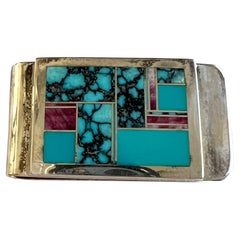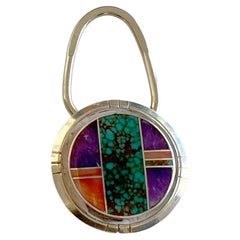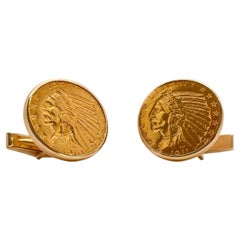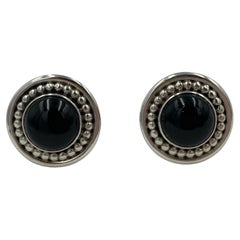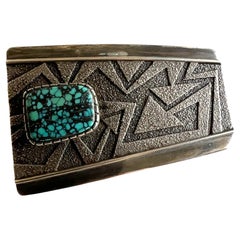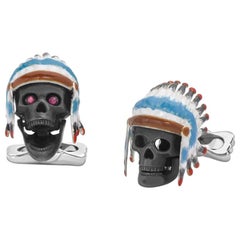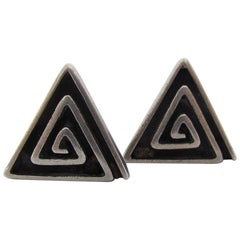Native American Cufflinks
Vintage 1980s American Native American Cufflinks
Turquoise, Sterling Silver
Vintage 1980s American Native American Cufflinks
Turquoise, Sterling Silver
Early 20th Century North American Native American Cufflinks
Gold, 18k Gold, 24k Gold
21st Century and Contemporary Unknown Native American Cufflinks
Onyx, Sterling Silver
Vintage 1960s American Native American Cufflinks
Turquoise, Sterling Silver
Recent Sales
2010s English Cufflinks
Sterling Silver
Vintage 1950s American Native American Collectible Jewelry
Sterling Silver
Vintage 1970s American Native American Cufflinks
Turquoise, Sterling Silver
Antique Early 1900s Victorian Cufflinks
Gold, 14k Gold
Vintage 1970s American Native American Cufflinks
Sterling Silver
20th Century Native American Cufflinks
Sterling Silver
21st Century and Contemporary Unknown Native American Cufflinks
Sterling Silver
21st Century and Contemporary North American Native American Cufflinks
Turquoise, Sterling Silver
21st Century and Contemporary British Contemporary Cufflinks
Ruby, Sterling Silver
21st Century and Contemporary American Native American Cufflinks
14k Gold
21st Century and Contemporary North American Native American Cufflinks
1990s American Native American Cufflinks
Coral, Turquoise, Sterling Silver
Mid-20th Century American Navajo Native American Objects
People Also Browsed
Vintage 1970s American Native American Fashion Rings
Onyx, Turquoise, Jasper, Gold, 14k Gold, Yellow Gold
Finding the Right Cufflinks for You
Cufflinks rose to popularity during the 1800s as fashionable men sought a refined and elegant solution for keeping their shirtsleeves together. Prior to this accessory, which initially materialized as a simple chain fastened to a button, men were lacing the ends of their sleeves with ribbon or string. Today, there are all manner of antique and vintage cufflinks that add flair and functionality to relaxed casual wear as much as they do for classy formal attire.
It wasn’t long before diamonds, emeralds and other precious gemstones began to appear on cufflinks, a means of adding ornament to clean and starched formal wear. When clothing manufacturers began to produce shirt cuffs and collars with more durable materials during the 19th century, a class of newer, stronger cufflinks gained credibility as being both essential and stylish. In the decades following this era’s design evolution, an entire industry bloomed around the craft of these subtle statement pieces.
Luxury brands more often associated with engagement rings and bracelets, such as Cartier and Tiffany & Co., have added cufflinks to their lines over the years, and jewelry designers, working in numerous styles, have explored the use of different materials and integrated a variety of ornamentation. Understated cufflinks of gold and platinum are guaranteed to cleanly complement any ensemble, while more niche designs allow the jewels to truly shine.
Cufflinks are practical pieces of jewelry that can also be very expressive. Consider the event for which you’re donning cufflinks and accessorize accordingly, but know that a distinctive pair of cufflinks, such as the colorful confections offered by Trianon, can pop against your dressy evening wear. Whether they’re geometric wonders of the Art Deco era, reliably relevant skull jewels or glittering accessories designed by Van Cleef & Arpels, adorned with the maison’s celebrated four-leaf clover or prominent animal motifs, you can delicately break from what can be a stuffy business meeting by introducing personality and pizzazz with a duo of nifty cufflinks.
A carefully chosen set of cufflinks can bring a stylish outfit together — literally. Find a large, luxurious collection of contemporary cufflinks as well as irresistible vintage pieces on 1stDibs today.
- 1stDibs ExpertOctober 12, 2021A Native American artifact is any object that provides insight into the lives and history of native people in America. These items range from carved stone pipes, weapons for hunting, tools for cooking, pottery, jewelry and more. Find a collection of artifacts on 1stDibs today.
- 1stDibs ExpertApril 5, 2022There are a wide array of different dolls made by the various tribes of Native American peoples. Some of the most well-known are the kachinas made by the Navajo, Hopi and Pueblo peoples. Shop an array of Native American dolls on 1stDibs.
- 1stDibs ExpertApril 5, 2022What Native Americans used to produce baskets varied from tribe to tribe. Generally, craftsmen used whatever materials were readily available. In the Northeast, sweet grass was a common material, while pine needles and wicker are frequently found in baskets produced by tribes in the Southeast. Find a range of vintage and antique baskets on 1stDibs.
- 1stDibs ExpertApril 5, 2022In the Native American language of Powhatan spoken by the Algonquian indigenous people, moccasin refers to a hand-sewn suede bootie. Today, people may call any shoes that feature stitched round toes by the name. Shop a variety of moccasins on 1stDibs.
- 1stDibs ExpertNovember 13, 2024To identify Native American beadwork, first consider the materials. Indigenous American artisans often produce beads out of glass and natural materials, such as shells, bone and wood, and use metal and plastic in their pieces less frequently. Older pieces will usually be held together by sinew, while newer examples will typically feature thread. Regardless of age, Native American beadwork will typically be expertly crafted, so pieces usually have tight, even stitching with no visible gaps. Familiarizing yourself with stitching techniques used by various tribes can also be helpful. You can find images of authentic beadwork on trusted online resources to refer to as you complete the identification process. Alternatively, you can have a certified appraiser or experienced antique dealer evaluate your piece. On 1stDibs, shop a wide variety of textiles and garments that feature Native American beadwork.
- 1stDibs ExpertApril 5, 2022To identify Native American baskets, you can research the patterns using authoritative online resources to try and determine which tribe produced it. However, many replicas exist and there are many tribes that produced baskets. As a result, it is a good idea to consult a licensed appraiser. On 1stDibs, find a variety of expertly vetted Native American baskets.
- 1stDibs ExpertApril 5, 2022What Native American drums are called varies by type. Ones designed to rest in the player's lap are hand drums, while instruments that hold water used primarily by the Iroquois and Yaqui are water drums. Large freestanding drums that produce loud percussive sounds are powwow drums. The Aztec and Hopi used foot drums. You'll find a range of Native American drums on 1stDibs.
- 1stDibs ExpertApril 5, 2022Native American slippers are called moccasins. Moccasins are characterized by their U-shaped puckered toe design and are crafted with various leathers such as sheepskin or buffalo. They may or may not be decorated with beading. Shop a collection of authentic moccasins from some of the world’s top sellers on 1stDibs.
- 1stDibs ExpertApril 5, 2022It depends on which region the beads were made since they were created out of available materials found in the land around them. In the Eastern Woodlands, white and purple marine shell beads were called “wampum”. You can shop a collection of Native American beadwork from some of the world’s top boutiques on 1stDibs.
- 1stDibs ExpertApril 5, 2022The most well-known Native American blankets come from Navajo weaving, which are prized by collectors worldwide. Originally utilitarian, the Navajo people began creating blankets specifically for export and tourism in the 19th century. Shop a collection of Navajo blankets from some of the world’s top sellers on 1stDibs.
- 1stDibs ExpertApril 5, 2022What a Native American headdress represents depends on what tribe produced it. In general, headdresses may symbolize a person's status within the tribe or serve as a sign of bravery during battle. You'll find a selection of Native American headdresses on 1stDibs.
- 1stDibs ExpertApril 5, 2022What rattles symbolize in Native American culture varies from tribe to tribe. Some indigenous people believe they serve as connections between the natural and spiritual worlds. Others believe they represent the ties between animals, plants and minerals. In addition, rattles sometimes symbolize independence. On 1stDibs, find a selection of Native American rattles.
- 1stDibs ExpertOctober 30, 2024Yes, some Native American jewelry is worth something. As with other types of jewelry, many pieces are made of fine materials, such as sterling silver, turquoise, jasper and lapis lazuli. Jewelry produced by Native American artists may also have value based on its age, style, type and other factors. Find a large selection of Native American jewelry on 1stDibs.
- 1stDibs ExpertApril 5, 2022To tell if Native American jewelry is real, have it evaluated by a licensed and experienced appraiser. Because every tribe has its own designs and identifying characteristics, it is usually not possible to determine authenticity using only online resources. Find a collection of expertly vetted Native American jewelry on 1stDibs.
- 1stDibs ExpertMay 5, 2023A number of Native American tribes are known for pottery, including the Cheyenne, Cherokees, Hopi, Iroquois, Navajo Pueblo and Shoshone. Artisans from each indigenous group have their own style. For example, Hopi pottery is often a red-brown color and decorated with black designs, while Navajo pottery is deeper brown and usually has a high-gloss finish. Find a selection of Native American pottery on 1stDibs.
- 1stDibs ExpertApril 5, 2022The two types of Native American beadwork are called the “lazy stitch” or “lane stitch” and the “tack stitch” or “flat stitch”. You can shop a collection of Native American beadwork from some of the world’s top boutiques on 1stDibs.
